
Magnum Photos is one of the oldest and most prestigious photography agencies in the world. This year marks its 70th anniversary. As part of this celebration Magnum, with Thames & Hudson, put together a book called Magnum Manifesto, providing an insight in the way the agency and its photographers evolved over the past decades.
In 70 years Magnum has grown from an agency with a couple of members, among them now famous photographers Robert Capa, Henri Cartier-Bresson and Elliott Erwitt to a renowned entity representing the best photographers in the world.
Its impact can not only be seen through the visuals its members put out over the years, shaping our views on the world along the way, it also becomes very clear through the incredible stories shared by the photographers themselves.
The Magnum Manifesto includes photographers from every generation. It’s divided in three sections, each discussing a different part of history through the eyes of Magnum’s members. We spoke to three of them represented in one of the sections of the book and exhibition – Constantine Manos, Richard Kalvas and Olivia Arthur.
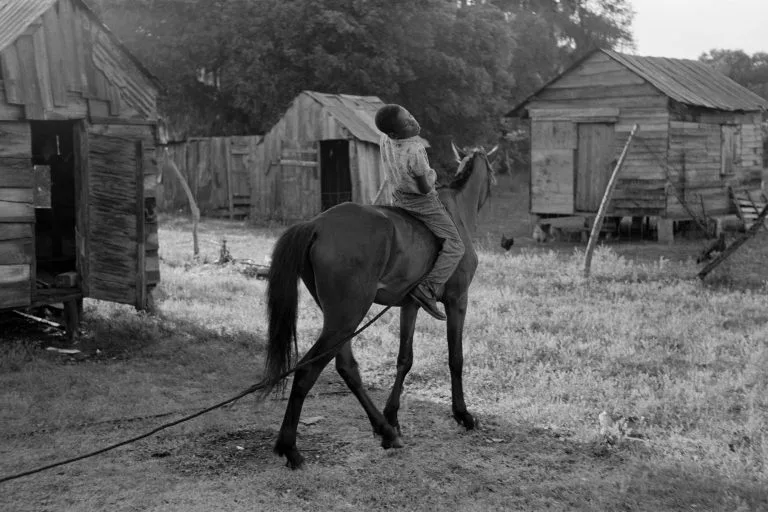
Constantine Manos
“I’m sure Magnum has the greatest photographic archive in the world. Not the biggest, but the richest and the most interesting photographic one in the world,” says Constantine Manos, who joined the agency in 1964. With his 83 years, Constantine is now one of the oldest Magnum members.
Constantine was first introduced to photography when he was only fifteen years old. He discovered the school’s darkroom and started shooting for the school’s newspaper.
“1952 was an important year, because then I first read about this photographer Henri Cartier-Bresson,” Constantine says.
“I read his philosophy and I saw some of his pictures in a magazine. He doesn’t allow cropping and I learned about his concept of the decisive moment. I thought, wow, this is for me. This is what I want to do.”
Constantine got himself a Leica and some Ilford film (as Henri also used), and set out to an island around the coast of South Carolina, called Daufuskie. It used to be a plantation, now inhabited by descendants of slaves.
“I did a little essay about a ten year old boy, who lived with an old couple – he was an orphan.” This would turn into his first series of pictures, now showcased in the Magnum Manifesto.
“I’d taken pictures before, but I didn’t know anything about good photography. I was just a photographer like anybody else. But when I read about Cartier-Bresson it changed my life.”
And so when Constantine was 18, he decided to take the Greyhound from Colombia to New York and visit the Magnum office to show his pictures.
“I met Cornell Capa there, and Cornell said, come let’s have a drink. I had never been in a bar before in my life, I had never had a drink. So I said, I have whatever you’re having, and he said, Well I’m having scotch. So that was my first drink, and I’ve been drinking scotch ever since.”
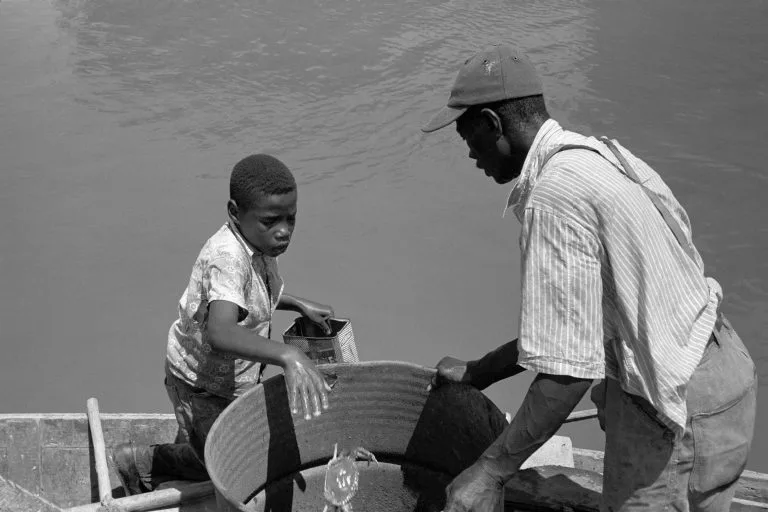
After this encounter Constantine did some smaller jobs for Magnum, but the project that got him invited was his Greek Portfolio. His parents, who fled from their home country to the US, always referenced a village they came from. So Constantine decided to visit Greece and shoot daily life there.
“I realised the best villages were the ones that had no electricity. They were very primitive and beautiful and simple. It was the old Greece. It was like nothing had changed in 200 years,” Constantine says.
He left a box of prints with the agency when traveling through Paris. Back in Athens, he got surprised by mail from Magnum. “It said, ‘Dear Constantine, we have just had our annual meeting and you are invited to become an associate member.’ Of course I was thrilled to death.”
Constantine is a traditional photographer in the sense that he truly believes in the voice of the person taking the picture. He says though, with the overabundance of cameras nowadays, everyone thinks they are a photographer.
“They are photographers, of course, but it is very difficult to be an exceptional one,” Constantine says.
“There are a lot of people looking for a gimmick, making a picture different for its own sake.” He finds this problematic because, “you’re tampering with the truth. And you’re tampering with believability, which is one of the great qualities of photography.”
“I think the best pictures are like poems, they’re things in your head, in your memory bank, in your brain.” Constantine’s biggest example is Cartier-Bresson and his idea of the decisive moment.
“I think the moment is very important in a picture; a successful photograph is a surprise. They should exist for their own sake. They should be something that give people pleasure and enriches their lives.”
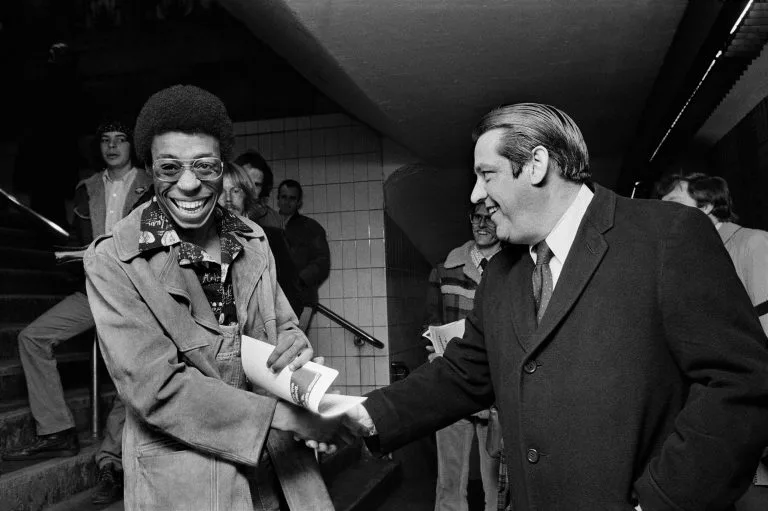
Richard Kalvar
Although his start at Magnum was quite bumpy (he thought he was already in, later to discover his portfolio needed to be reviewed in the agency’s official meeting), Richard Kalvar became a full member in 1977, and he even was President of Magnum for some time.
Richard Kalvar can be best described as a street photographer. Whether he’s shooting in Rome, Paris or New York, his photos show a mix of ordinary life and ambiguous storytelling – at first glance they seem to depict a normal scene, but at closer inspection there’s an extra layer hidden in the pictures.
His work in the Magnum Manifesto is a series of pictures taken in a subway station during Fred Harris’ electoral campaign in 1976 in Boston. “People would come by and shake his hand, and then another person and another person. There was a certain ridiculousness of the situation which became interesting.”
The result is a series of quite similar, repetitive photos of Fred Harris in the same position, shaking people’s hands. “Each photograph in itself is not great,” but when you put them in sequence it creates this absurdist vibe, Richard explains.
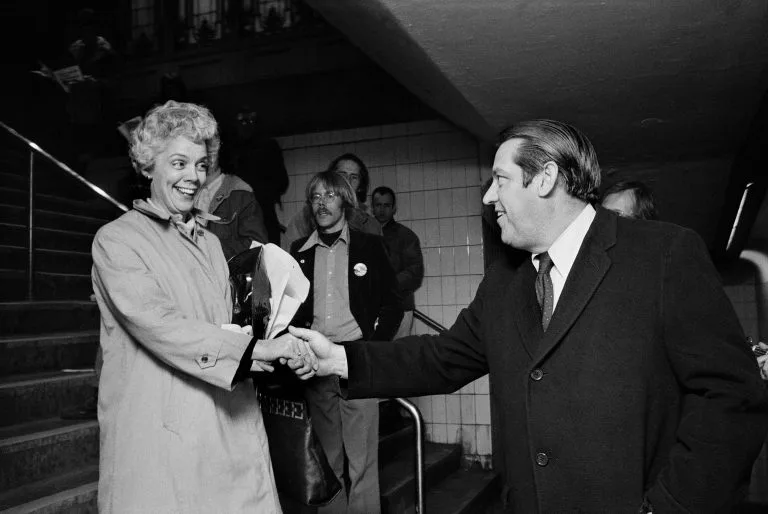
Yet, Richard is actually drawn to try and convey a story within a single image. “In general I don’t tell stories with a series of pictures where each picture tells a different aspect of things,” he says.
“What interests me is when each picture tells a story; you can take it out of its context and it has a life of its own that goes beyond the obvious descriptive type of photography.”
That’s why street photography is most appealing to him. On the streets an encounter with someone is short, so you don’t have the time to grasp who a person exactly is and what they do. “I can let myself go a little bit, because I’m not saying what these people are like,” Richard says. “I’m showing my first impression I got in that short period of time, so I don’t really feel a big responsibility.”
This means he doesn’t shy away from adding multiple interpretations to events through his imagery. “I like to be very ambiguous and so you don’t know what’s going on. It looks like something is happening and it’s not necessarily happening,” he says.
“It’s kind of playing with this idea of what reality is. I’m working on the edge of reality.”
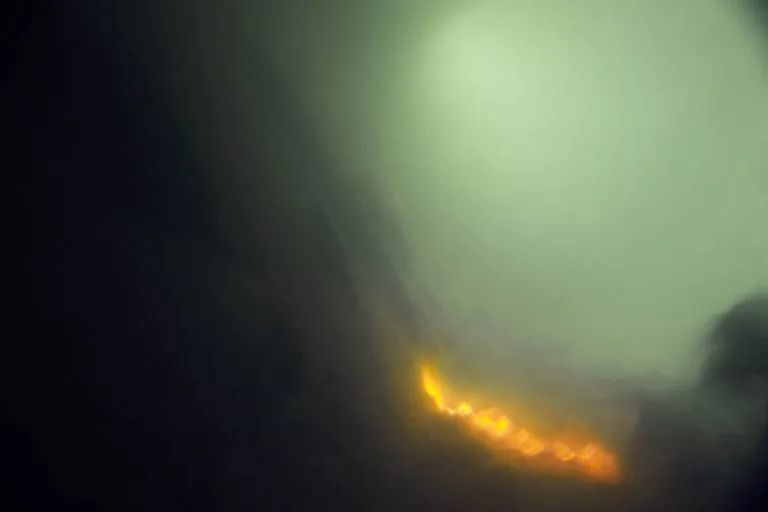
Olivia Arthur
Olivia Arthur is one of the younger generation photographers who’s represented in the Magnum Manifesto. She was first introduced to the agency in 2002 when she won the Inge Morath Award, established as a tribute to the early female photographer and to encourage women to become members.
“It’s quite famously a very male agency,” says Olivia. “There’s definitely an awareness about this within the whole community of Magnum. There are a lot of young female photographers out there and there’s no reason why we shouldn’t be taking them on.”
Olivia had just started her career when she became a member in 2008. “Some people come to the agency when they’re more established, like Jim Goldberg. But a lot of people join when they are quite young and that’s something that’s encouraged,” she says. “You grow with the agency. It’s the idea of the big family.”
Olivia says she became more confident playing around with her photography after becoming part of the Magnum community. Stranger, her first series at the agency and the one represented in the manifesto, pushes the idea of the medium’s role from merely documenting a moment, towards it more being an art form and using it to tell a narrative.
Stranger depicts the past and the present of Dubai. “People never speak about the history of Dubai, they always talk about the future, what it will be, the big buildings, all the things that are going on now. But no one ever looked at how this place became what it is.”
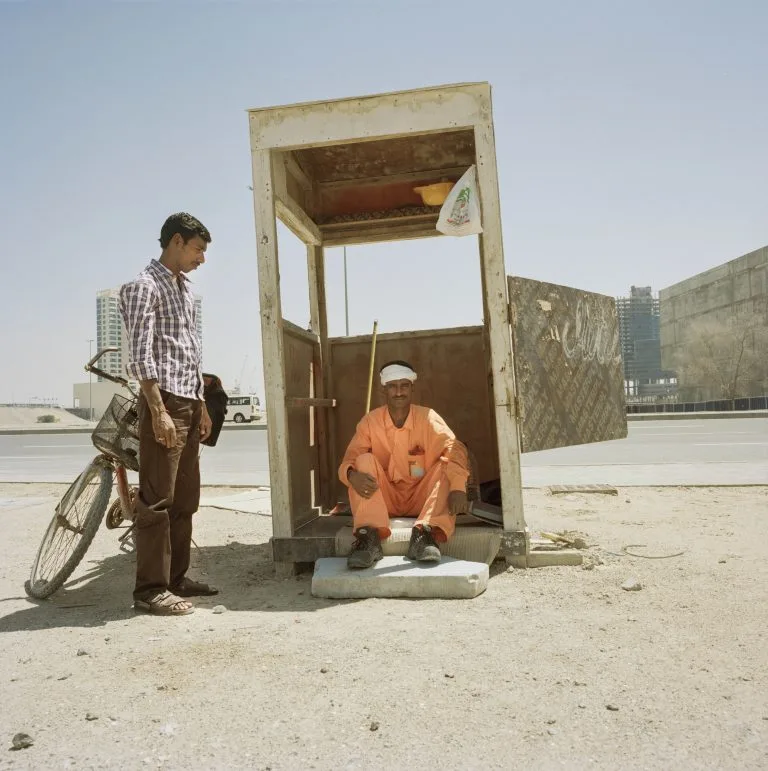
While researching Dubai’s history, she came across a story about a shipwreck in early 1961 before the coast of the city. “There’s this family who lost their son in the shipwreck but believed he was still alive. To this day they still search for him; they place ads every now and then to try and find him.”
Struck by this tale, she came up with a fictional character of a young passenger who survived the disaster. “This is when it became conceptional: Imagine if someone ended up on an island somewhere in the Gulf, and they’d come to the city now – how would they see it?”
And so the project shows the city as if seen through the eyes of this stranger, reflecting the feeling of alienation Olivia felt, and with her many others, when first wandering the streets of Dubai. “Nobody feels like they properly belong, they’ve only come with this kind of purpose. There’s this feeling of isolation and chaos.”
Olivia acknowledges some of her peers might find her work quite experimental, yet she says it is not only that. “It starts out with a concept, which is a made up concept of a fictional character, but that is just a vehicle. It’s essentially a documentary project about Dubai.”
The photos are compiled in a book with transparent paper, allowing to see multiple images at once. Next to that she mixes old maps and text snippets from interviews with locals with her photos, cleverly combining the past with the present.
“I’m not at all afraid of mixing texts with photography. If they’re used in the right way, they can enhance each other in a wonderful way,” she says.
“Some people can bring a whole story in one image, but for me it is about these series of narratives. It’s about putting things together; the ability to tell something more, to tell a story.”
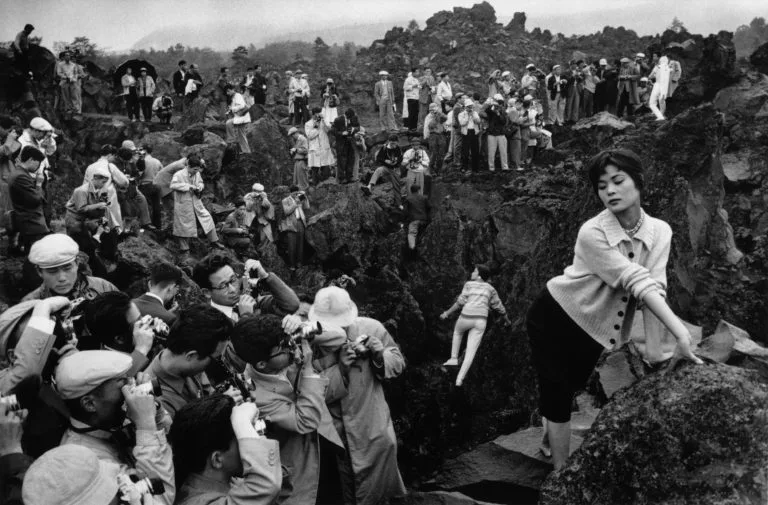
70 years of Magnum
The fact Magnum exists for 70 years, also means it has a big community of photographers and so a wide variety of views on the role of photography. Over the course of the years we see opinions about the medium change from capturing a moment towards exploring different ways of using it as a tool to tell a story; clearly illustrated by these three photographers.
Whatever position the photographers take, they have one huge thing in common. “I think we all make work that looks at things going on in the world, whether they’re large events or tiny micro one-family one-person stories,” Olivia says.
“One of the greatest, most important subjects Magnum has captured from the beginning is humanity. It is people. Ordinary people,” Constantine says.